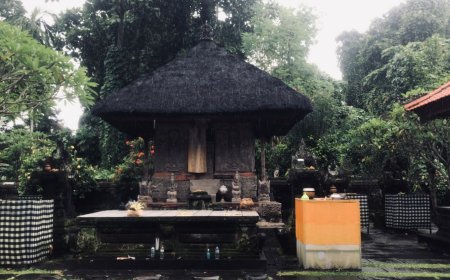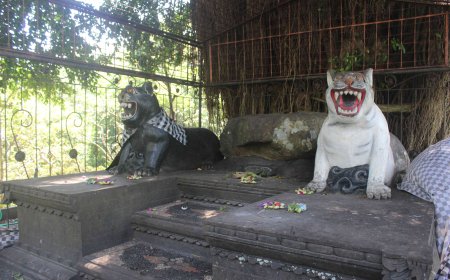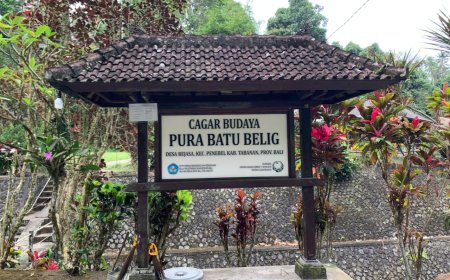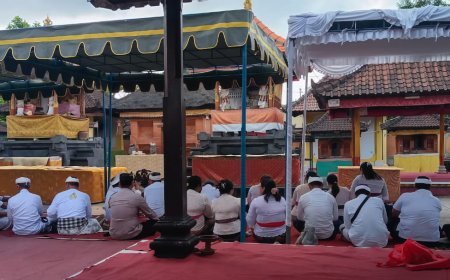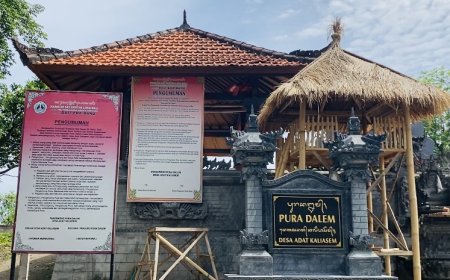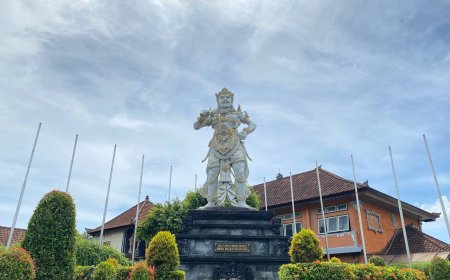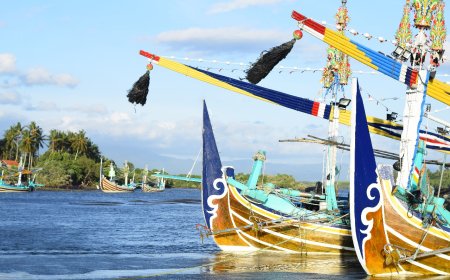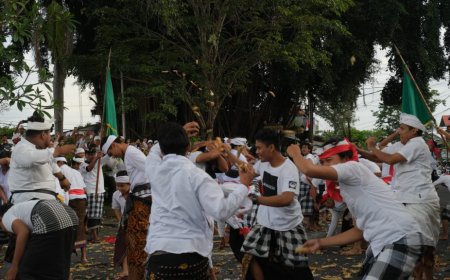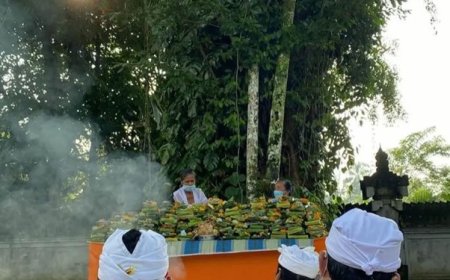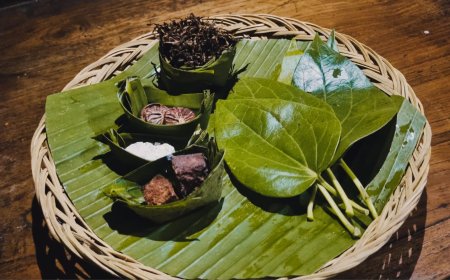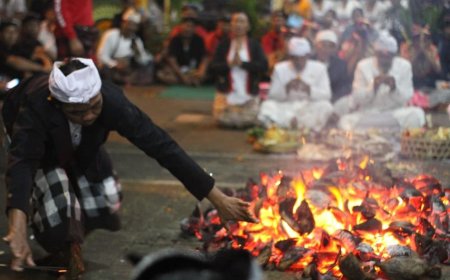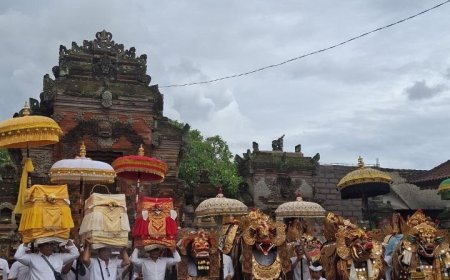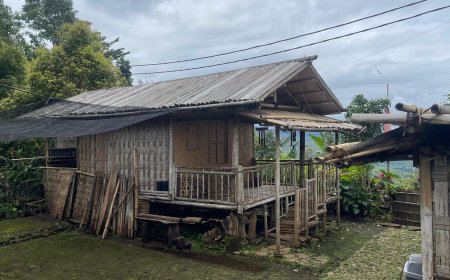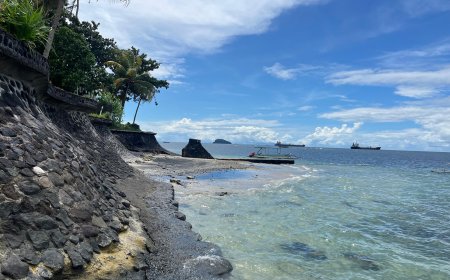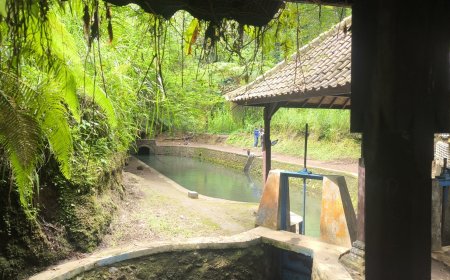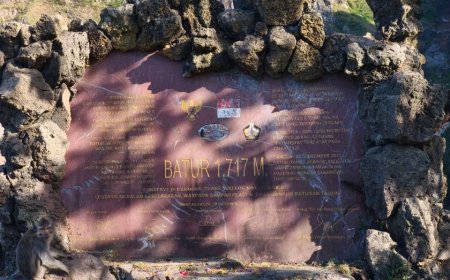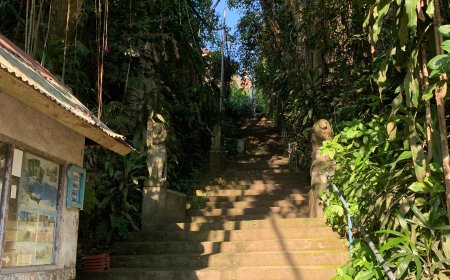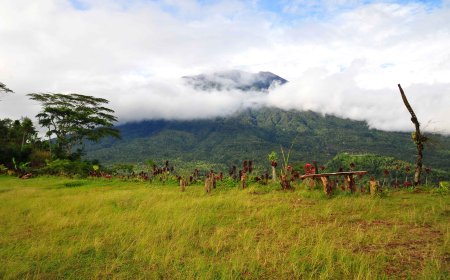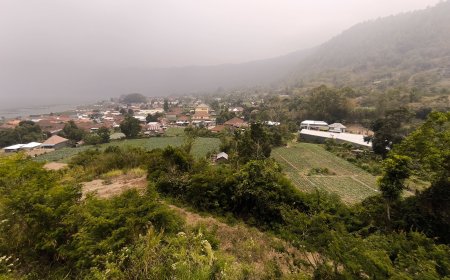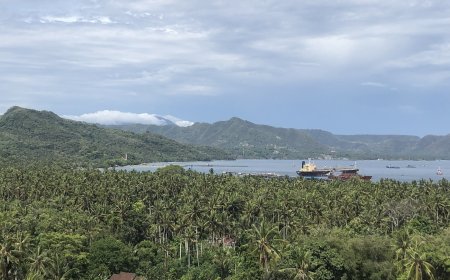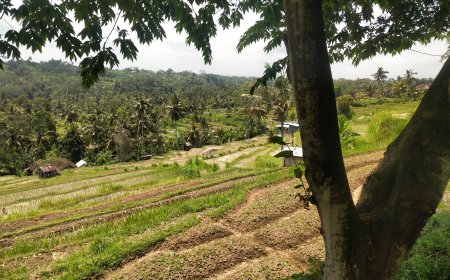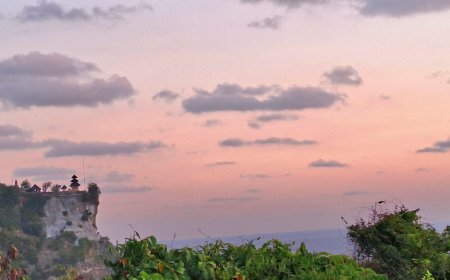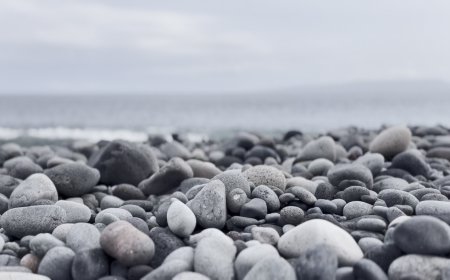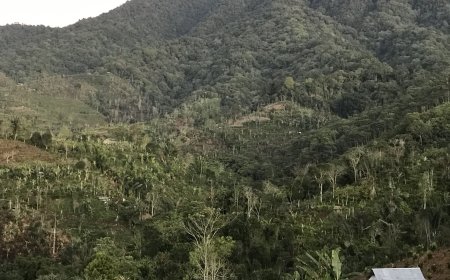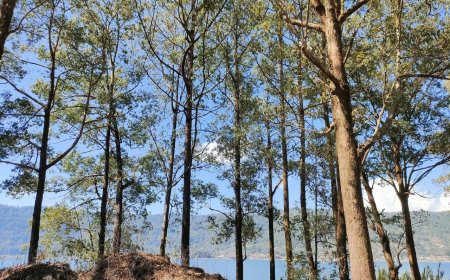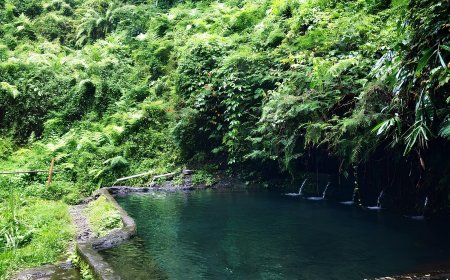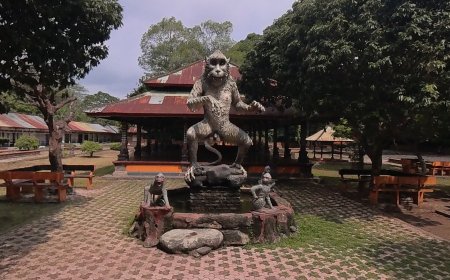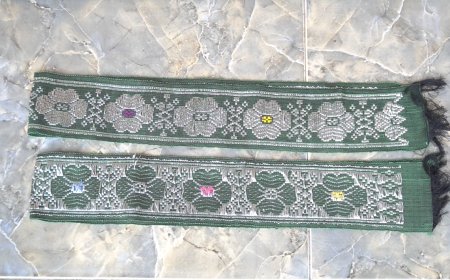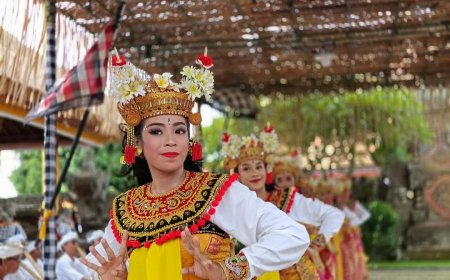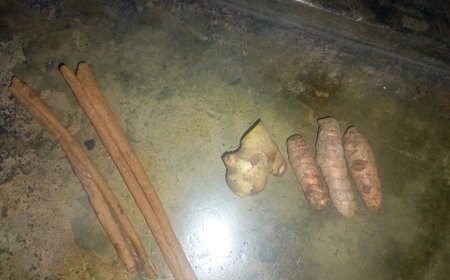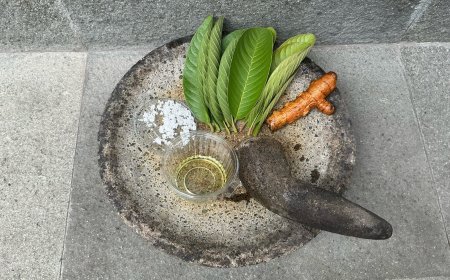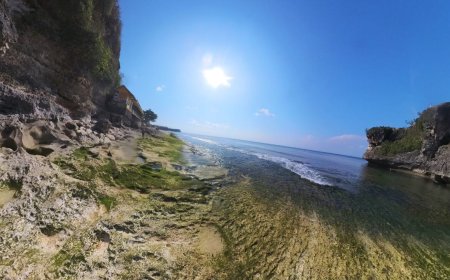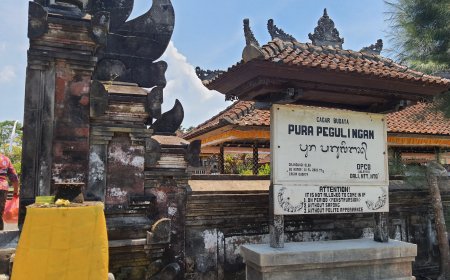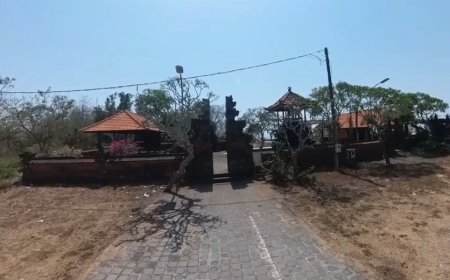The Sacred Temple of Candi Narmada Tanah Kilap: The Presence of a Temple with a Long and Unique History.
Candi Narmada Tanah Kilap Temple is one of the Dang Kahyangan temples located in Pemogan Village, Denpasar precisely at the Tukad Badung estuary. This temple is believed to be a place to ask for grace, especially for traders and fishermen. A temple with an interesting history and story and the beauty of Luhur Candi Narmada Temple makes this temple visited by many local people.

The term ‘Pura,’ currently used as the name for sacred places in Hinduism, originates from the Sanskrit language, specifically from the root word ‘pur,’ which signifies a city, fortress, or a city surrounded by walls. The use of the term ‘Pura’ to refer to sacred places may have emerged more recently. Before the adoption of the term ‘Pura,’ Hindu adherents used words like ‘Hyang,’ ‘Kahyangan,’ or ‘Parhyangan’ to denote their sacred places.
Luhur Candi Narmada Tanah Kilap Temple located on the border between Badung Regency and Denpasar City, precisely at the estuary of the Badung River on Jalan Bypass I Gusti Ngurah Rai, Denpasar. The existence of this temple has a history that is quite extensive and unique.
It is believed that the one enshrined in this temple is Ida Ratu Bhatari Nihang Sakti, the Goddess of Prosperity. Before standing majestically as it does today, Pura Luhur Tanah Kilap already existed, albeit initially just a pile of stones. The history of this temple spans the period of the Bandana Raja Kingdom’s rule, where on the southern coast of Bali lived a fisherman named Pan Santeng. His daily life centered around fishing at the estuary facing the South Bali Sea. One day, while out at sea, Pan Santeng couldn’t catch any fish at all, and this went on for three consecutive days.
On the third day, Pan Santeng finally uttered a promise Masesangi (oath), if he succeeded in catching fish, he would offer pekelem and his prayers would be granted. Consequently, Pan Santeng built a shrine atop a coral rock, and diligently, every day, the fisherman made offerings at the shrine. Until one day, Pan Santeng received a divine message that the shrine was the abode of Ida Brahma Putri from Patni Keniten, named Ida Ayu Ngurah Saraswati Swabhawa. In 1958, a woman from Kuta then received guidance to construct a grand pavilion in the precincts of the shrine dedicated to Ratu Nihang Sakti.
Eventually, the grand pavilion was constructed, and over time, the shrine increasingly attracted visitors from all over Denpasar and beyond. Particularly, traders and fishermen regarded this temple as a place to seek blessings. With the passage of time, the development of Luhur Tanah Kilap Temple progressed gradually, with the addition of several pavilions and other structures such as the Bale Kulkul, Palinggih Ratu Gede Bendega, Gelung Kuri and Peletasan, Pelinggih Padmasana, Pelinggih Meru and Negara Segara, Pelinggih Berada Rambut Sedana, Pelinggih Penglurah, Pelinggih Bhatara Wisnu, Pelinggih Ratu Bagus, Pelinggih Jineng, Pelinggih Bhatari Nihang Sakti, Gedong Simpen, and Telaga Waja, as well as Bale Peselang. All these shrines are located within the core Mandala area of Luhur Tanah Kilap Temple.
Meanwhile, in the surrounding area, there are two other shrines which are Pelinggih Persimpangan Bhatara Dalem Ped situated to the east and Pura Taman and Tapa Gni located to the west. The various shrines and temples together form a unity in Luhur Candi Narmada Tanah Kilap Temple.
